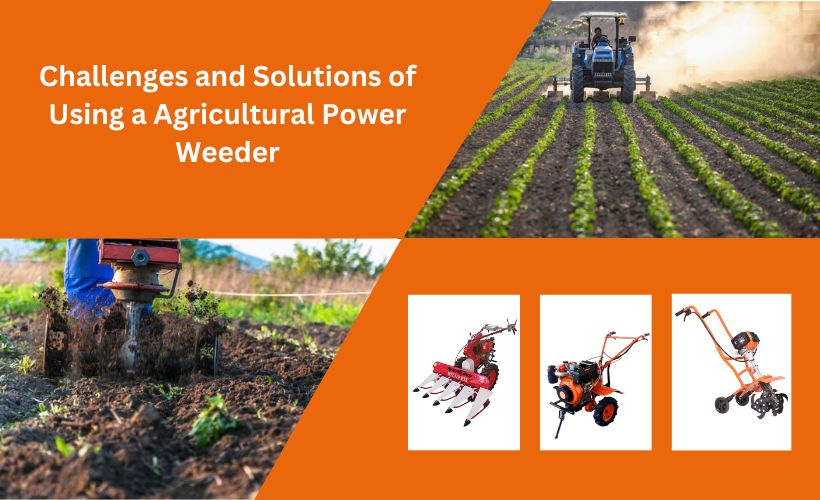Agricultural power weeder have become essential tools for modern farming, allowing for more efficient and cost-effective weed management. These machines save labor and improve crop quality. However, like all technology, they bring specific challenges. Here’s how to address common issues and maximize the potential of these innovative tools.
Common Challenges and Solutions for Power Weeders
1. Initial Investment
- Challenge: For small-scale farmers, the initial weeder machine price can be significant.
Solutions:
-
- Government Subsidies: Many governments offer financial support for farmers investing in machinery like agricultural power weeders to offset costs.
- Shared Ownership: Farmers can partner with neighbors to share the cost of a Mini Weeder Machine or a similar device, making it more affordable.
- Rental Services: Renting a weed cutter machine can be a smart alternative for farmers with short-term needs or seasonal demands.
2. Maintenance and Repair
- Challenge: Regular upkeep is essential for machines like hand weeder machines to function well and have a long lifespan.
Solutions:
-
- Preventive Maintenance: Routine oil changes, blade sharpening, and filter replacements are essential to keep any agricultural power weeder in top condition.
- Access to Skilled Technicians: Having qualified technicians available for repairs helps minimize downtime.
- Availability of Spare Parts: Make sure you have easy access to genuine spare parts for a quicker response when repairs are needed.
3. Operator Training
- Challenge: Operating a weed cutter machine requires specific skills to ensure efficiency and safety.
Solutions:
-
- Manufacturer Training: Many manufacturers provide hands-on training, covering all aspects of operating and maintaining Mini Weeder Machines and similar equipment.
- Practical Experience: Gain real-world experience by using the machine under the guidance of experienced operators.
- Safety Protocols: Following safety guidelines and using protective gear can prevent accidents, especially with powerful machinery.
4. Terrain and Crop Conditions
- Challenge: Not all hand weeder machine are suited to every type of terrain or crop.
Solutions:
-
- Machine Selection: Choose the appropriate agricultural power weeder for your field, taking into account soil type, crop height, and landscape.
- Blade Adjustments: Adjust the blades to the desired depth and angle to avoid crop damage while maximizing weed removal.
- Timing of Operation: Operating during the right season and at the correct stage of crop growth reduces the risk of harming crops.
5. Environmental Impact
- Challenge: Improper use of agricultural power weeders may cause soil erosion and affect surrounding ecosystems.
Solutions:
-
- Minimal Tillage Practices: Reduce soil disturbance by combining the weed cutter machine with minimal tillage methods.
- Targeted Weeding: Aim for weeds precisely to avoid damaging beneficial plants and soil organisms.
- Responsible Disposal: Dispose of weed residues carefully to prevent contamination and promote a cleaner environment.
Conclusion
By addressing these challenges, farmers can harness the full potential of agricultural power weeders to improve efficiency, reduce labor costs, and maintain environmentally responsible practices. Implementing these solutions can lead to healthier crops and better long-term outcomes for the farm.
Frequently Asked Questions (FAQ)
Q1. What advantages do power weeders have over manual weeders?
Using a Mini Weeder Machine provides substantial benefits in efficiency, consistency, and crop health, making it a powerful alternative to manual weeding.
Q2. Are training and certifications necessary to operate a power weeder?
Yes, operating a weed cutter machine safely requires training, which many manufacturers offer to new users.
Q3. How can I maintain my agricultural power weeder to ensure longevity?
Regular maintenance, such as oil changes and blade sharpening, is essential for the machine’s longevity. Following the manufacturer’s guidelines for routine care keeps it performing at its best.




